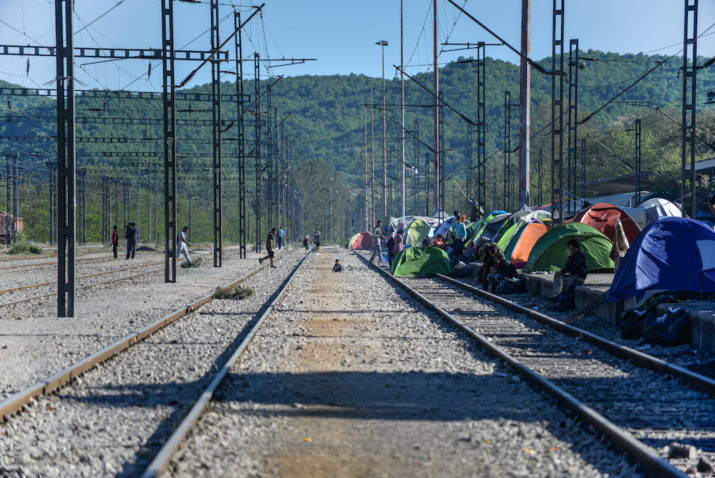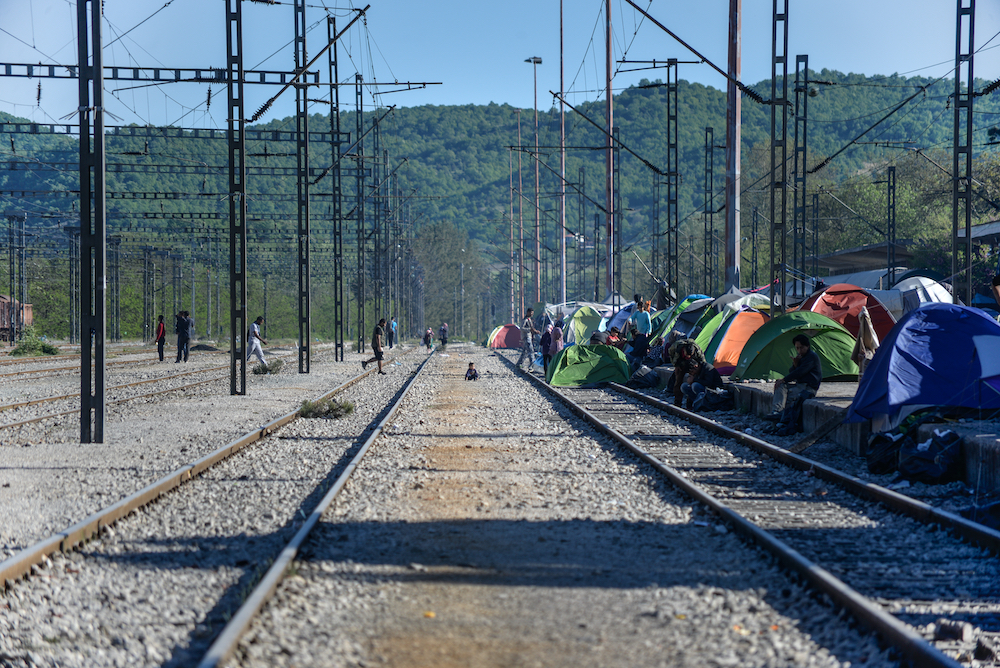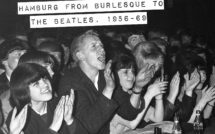
A Selective Bibliography of Forced Migration: Resources for A New Generation of Discourse

This project is an extension of the Consortium on Forced Migration, Displacement, and Education’s efforts to create a digital repository of educational materials related to forced migration.
In conversations about migration and forced migration, there are often more opinions than there are people in the conversation. In this climate of fear, xenophobia, hypermobility, and immobility, it is imperative that we move beyond knee-jerk reactions and use our capacity for critical thinking and reflection. So many valiant attempts to talk above the roar of demagoguery take place on fast-moving, short-form platforms like Twitter and TikTok, or in academic journals and manuscripts that can take several degrees and many days to digest, and can be intimidating for people who want to learn but do not know quite where to start. We, a student collective at Vassar College launched by Professor Brittany Murray (now of the University of Tennessee Knoxville), are trying to find a middle ground.
We were inspired by the #CharlestonSyllabus (and its creators, who kindly offered their advice), the Ferguson Syllabus, and other crowdsourced resources that provided well-researched information on critical social and political issues. We wanted to create a guide of multimedia, primarily English-language resources that can help inform members of the public—in particular, educators and young people like us—on this much debated, sensationalized, but poorly understood topic. Based on our classroom and community engaged learning experiences, and advice from faculty mentors, we created the Selective Bibliography with the hope that all audiences can find resources that intrigue, inform, and inspire, as well as challenge their perceptions of migration. What follows is not an exhaustive list of every existing resource on forced migration (hence selective bibliography), nor is it a ready-made syllabus broken into individual lesson plans. It is something in between: a repository of materials to augment syllabi—or dinner table conversations—for anyone teaching or debating migration.
To that end, we have created multimedia thematic sections—on COVID-19 and migration, sexual health and violence, mobility within Europe, and more—that feature media such as Twitter threads, films, op-eds, novels, poetry, theater, textile art including content created by people who have experienced displacement. It is essential to include the voices of those around whom the bibliography revolves—individuals who have experienced forced displacement—and strive to highlight these marginalized stories when possible. Doing so challenges the self/other binary often present in debates about forced migration, and allows for learning from as well as about people who have faced displacement.
We hope readers learn something new, walk away with more questions than they had at the outset, and broaden their perspectives on the connections between the emergencies dominating public debate. Slow-motion disasters of disenfranchisement, exclusion, and systemic oppression have everything to do with the fast-moving crises of border violence and COVID-19. We hope that readers incorporate these and other resources into their syllabi and conversations, and prod others to challenge their assumptions as well. What follows is a selection of the resources our team has put together. Follow the links at the bottom of each excerpted thematic section description to access the full list of curated resources. Visit our website to access more sections and further detail.
Loving Minds and Caring Hands: Displaced People Building Compassionate Communities During COVID-19
Angie Diaz
At a time when people feel estranged from each other and their communities because of COVID-19, refugees and asylum seekers seek to bridge this gap by extending compassion to their communities and newfound homes. They make their resilience known through their skills—sewing, medicine, engineering—that were developed in their countries of origin and/or through their migration. These skills are a labor of survival and of care. Their acts of kindness—masking-making, being first responders, delivering food—showcase ingenuity and the desire to become part of.
It would be negligent to not acknowledge the narratives of human rights violations that migrants, refugees, and asylum seekers face throughout this pandemic: inadequate quarantining and social distancing conditions, medical care, and resources. This collection of resources merely provides one piece of the refugee, asylum seeker, and COVID-19 narrative, with the intention to foreground migrant agency and action. However, as seen in the many of the resources in this section, refugees and asylum seekers continue their battles even once they have resettled or begun integrating into a community. They engage in the practice of creating home and belonging away from everything familiar. The seemingly simple concept of home is complicated with the burdens and regulations that come with displacement. It is a constant work in progress to feel valued, part of, and at home.
Highlighted resource: Maia Bix, “Vanig’s Story,” in Refugees at Work, produced by Tent Partnership for Refugees, podcast, June 11, 2020.
Maia Bix from Tent Partnership for Refugees interviews Vanig Carabedian, a Syrian refugee residing in Canada, who hopes to use his medical skills to be a COVID-19 first responder.
Click here for other resources.
Samantha Cavagnolo
How far in the world can ten films about migration take you? How many countries would you see? How many oceans? How many people? Take twenty seconds, close your eyes, and guess. The answer is thirty-four but that isn’t the only answer. Chances are, we didn’t get the same answer. Even in films, migration is hard to quantify. Just one story of forced migration can span the globe.
This collection of films of forced human migration spans genres, budgets, and agendas. Even if you do not find yourself drawn to every film, each pulls you into the world of forced migration. Films are available in a variety of places: libraries, streaming services, etc. You can watch them at home, on your phone, on television, nearly everywhere, anytime, and in any format. Regardless of where you find these films, their importance is always the stories they tell and places they migrate to and through.
Highlighted resource:
Lion (2016), directed by Garth Davis.
Click here for other resources.
A Re-Introduction to Forced Migration: When the Facts Change…
Matthew Brill-Carlat
…What do we do with our opinions? Even when our public discourse meets the bare minimum standard for avoiding overt xenophobia, forced migration is not always what we imagine. What is visible about forced migration and those who experience it is not always the full picture. The public may see asylum-seekers pressed up against border fences or in rickety boats, but not the violence and oppressive economic and political structures that forced each one to flee, or the fraught text messages and selfies they send to loved ones. Many of us still tend to think in the categories of “lawful” and “unlawful” movement, without asking why certain behaviors are considered unlawful—and if they should remain so. Furthermore, families and individuals can be forced from their homes for many reasons beyond the narrow canonical definition of what makes someone a refugee (generally fleeing war or genocide).
The collected books, articles, and film—some produced by people who’ve experienced displacement themselves—discuss a selection of these scenarios, following families evicted from their homes, people sold into slavery, or experiencing confrontations at and with national borders, communities fleeing warming seas and rising ties, and rejecting the power of the citizen/non-citizen binary, and more. This collection is transnational, with an accent on the US, but is not possible to account for all the aspects of worldwide forced migration in a list of sources as short as this one. Instead, consider this a re-introduction to the topic—one that forces us to question the staid, flattening accounts of “deserving” and “undeserving” immigrants, in order to have a more nuanced conversation on movement, belonging, and the political demands of people who have experienced displacement.
Highlighted resource:
Saúl A, “Documenting the Undocumented: How the US-Mexico Border Shaped My Mother’s Life,” Media Diversified, June 21, 2018
Then-undergraduate student Saúl A. assembles a multimedia, personal-political account of borders, family, trauma, and hope.
Click here for other resources.
Free Movement and Belonging in Europe: The Situation of the Romani Peoples
Naima Nader
A Deutsche Welle headline from 2013 reads: Roma migration bothers ‘borderless’ EU. This title sums up the hypocrisy of Europe’s “free-movement” rhetoric in the Schengen Area. The right to “move and reside freely within the territory of the Member States” as outlined by the EU Charter of Fundamental Rights is not granted to all Europeans. Time and time again, the Romani people- the largest ethnic minority of Europe- are denied the right to free movement as well as many other human rights. We are seeing a rejection of Roma as being European even when they have been a part of Europe for centuries, are citizens of EU countries, and are native speakers of their country’s languages. In her book European Others, Fatima El-Tayeb explains how whiteness is weaponized as a tool of differentiation: some populations are “defined as inherently “non-European” because of a racialized cultural difference linked to a non-European origin (an origin that, as is the case of Roma and Sinti, might lie centuries in the past).” The Roma illustrate perfectly that for many Europeans, there is the perception that there are no minorities in Europe, only “migrants.”
This selection of resources attempts to reverse that assumption and to put into question the ways in which Europeans are implicitly thought of as White, while “race” is supposed to be a non-issue in Europe. We must think about who we define as European, and to bring to light the discrimation and persecution that Roma people face, something that many Europeans are willfully ignorant of. Ultimately, the goal is to learn about Roma history and culture through Roma self-representation and positive counter-narratives. The examples here span EU and non EU countries including Hungary, Spain, Montenegro, Romania, Germany, and the United Kingdom.
Highlighted resource: RomArchive is a digital archive, created by Roma, that aims to “counter and subvert the structural, secular racism that led to antigypsy representations of Romani identities.” In it, Roma are shown as protagonists and agents of change rather than solely victims. The sources range from photography to drama, as well as film, dance and more. It is available in English, German and Romanes.
Click here for other resources.
Finding Voice Through Theater: Forced Migration and Self-Expression
Violet Cenedella
“I regard the theatre as the greatest of all art forms, the most immediate way in which a human being can share with another the sense of what it is to be a human being.” ― Oscar Wilde
As Wilde writes, the beauty of theater lies in its ability to connect people across vast distances, circumstances, countries, languages, borders, and any seemingly insurmountable difference in worldview. Refugees have harnessed this unique ability to the fullest extent to share their life experiences and find community among people who share very little in common with the lived experiences of a forced migrant. Further, refugees have pushed the limits of theater creating fresh perspectives which showcase non-Eurocentric stories and reshape normative definitions of theater and how it should be used.
The collections of sources below showcase the work of refugees, past and present, who look to theater to reach out across that insurmountable distance between “us” and “them” and successfully build connections and mutual understanding. These examples are nothing less than triumphs of self-expression.
This section is divided into four parts to highlight four significant uses of theater by refugees around the world. Refugees, migrants, and displaced peoples use theater as a powerful tool for (1) self-empowerment (Theater as Empowerment), (2) the continuation of traditions and cultures of the homeland (Theater for Community Education), (3) storytelling despite humble means (Thrifty Theater), and (4) reclaiming their own narratives and belonging after migration (Theater to Create Space, Citizenship, and Belonging in the New Country). These sources are separated for organization; however, it’s critical to note theater, generally, and refugees’ use of it is creative in many more ways than can be documented here and should by no means be limited to four categories.
Click here for other resources.
Kaiya John
Sexual and reproductive health and violence is a historically stigmatized and silenced issue. Although massive strides have been made to bring attention and funding to these subjects since the delineation of reproductive health as a right at the 1994 UN conference on Population and Development in Cairo, it is nonetheless a pertinent and sensitive matter with persisting need for change. Barriers to reproductive health and instances of sexual violence are especially exacerbated in situations of violent conflict and forced migration. Access to reproductive health in refugee camps is strained by logistics and cultural taboo; sexual violence is a reality which has been normalized as a part of the “refugee experience.” As a senior (male) UNHCR official working in a refugee camp in Australia explained, “[rape] happens so often to these women that they get used to it, sort of expect it” (Pittaway and Bartolomei). Furthermore, fear of extreme retaliation from perpetrators, law enforcement, and/or the survivor’s own community leads to very low reporting rates (for all genders), continuing both silence and stigma.
It may seem that the most efficient way to “solve” or alleviate these colossal issues is through humanitarian and NGO reports for donors, or perhaps academic works; i.e. through identifying and detailing quantifiable gaps and ways to close them. While there is logistic truth to this statement, it has the ability to desensitize us to a highly personal experience; it is important to be in continuous consultation with and awareness of the stories of those around whom discussion revolves but often excludes. And while a substantial amount of ethnographic research—with findings based on interviews with those affected—exists, the relayed “refugee experience” is still controlled by and filtered through a western researcher. Therefore, as you peruse the following sources, please keep in mind the gravity of the information, the individuals behind the statistics, and the context in which the findings are reported and ingested.
Highlighted resource: Eileen Pittaway and Linda Bartolomei, “Refugees, Race and Gender: the Multiple Discriminations against Refugee Women,” Mahanirban Calcutta Research Group, August 1, 2001
In this paper, Pittaway and Bartolomei explore the intersection of race and gender in refugee situations. Through a case study of Australian refugee policy, they analyze the ways in which these factors compound to exacerbate instances of human rights violations against female refugees.
Click here for other resources.
The United States Prison System Viewed as a System of Forced Migration
Elijah Appelson
The United States Prison System is one of the largest systems of forced migration and displacement in the world, targeting hundreds of thousands of African American and Latinx individuals. The European Union defines a forced migrant as “A person subject to a migratory movement in which an element of coercion exists, including threats to life and livelihood, whether arising from natural or man-made causes.” When a person is arrested and sent to prison, they are trafficked, sometimes thousands of miles out of their community by correctional officers who threaten to shoot and kill them if they do not cooperate. You may not think of those who are incarcerated as forced migrants, and incarcerated people do not usually cross-national borders, but does it make a difference if a person is forced out of their homes and community by a correctional officer, political unrest, or a natural disaster? Even aside from the incarceration of migrants and asylum seekers, the forced migration of inmates leads to higher health problems in the prison population, puts a strain on families, and disrupts the communities where those who are incarcerated come from, mirroring the challenges introduced by other forced migrations.
This collection of resources aims to facilitate novel discourse on mass incarceration and forced migration to show that the United States prison system is one of forced migration. To do this, this section compares the similar effects that the prison system and immigrant deportation and detention have on individual and family healthcare, family finances and cohesion, and community trust and prosperity in the United States.
Click here for other resources.
COVID-19 and Migration Detention in Greece (Summer 2020)
Haru Sugishita
Greece is the doorway to Europe for refugees and forced migrants from the Middle East and Africa and the COVID-19 pandemic has greatly affected the country and migrants there. Europe has received numerous migrants and the situation has escalated with the Syrian crisis in 2011 and the conflicts in Africa in the 2010s. Thousands of refugees have crossed the Aegean Sea between Turkey and Greece and arrived on its islands. Greece, along with Europe, has implemented several policies to regulate the number of migrants, such as the EU-Turkey agreement, the Dublin regulation, and Frontex.
Amid the COVID-19 pandemic in February 2020, Turkey announced that it would open its borders to Greece, breaking the 2016 EU-Turkey agreement, which had asked Turkey to contain refugees within the country and prevent them from arriving in the EU in exchange for negotiations on Turkey’s accession to the EU. Turkey mentioned the lack of support from the EU for refugees in Turkey as the reason why Turkey opened its border with Greece. However, it is said that the true reason is Turkey demanding support for its military action in Syria against the regime and its ally Russia. As a result, thousands of migrants amassed at the border between Turkey and Greece.
With the collapse of the EU-Turkey agreement and the COVID-19 pandemic, Greece has closed its border to several countries including Turkey and tightened its border controls. Greece deployed military and police forces at its border and the number of Frontex officers has increased, in order to prevent undocumented migrants. Greece has also suspended the asylum seeking process from March to June in order to prevent the spread of the virus. The collapse of the EU-Turkey agreement and the COVID-19 pandemic simultaneously deprived the migrants of their right to seek asylum.
The impact of the COVID-19 pandemic has also arrived at migrants living in Greece. In May, about twenty cases of COVID-19 were found for the first time in the Ritsona camp near Athens. Continuing from this, hundreds of cases among refugees have been reported and the number may grow as the refugee camps are overcrowded and unsanitary. The number of refugees far exceeds the camps’ capacities, and the sanitation facilities are limited (ex. one toilet and shower for hundreds of migrants). In response to this situation, Greek authorities have taken several measures, which have taken away the rights and dignity from refugees. Firstly, the government imposed a lockdown on the refugee camps, which prevented migrants from going out to the town, thus raised tensions and anxiety among migrants, and prevented legal workers from coming to the camps, which made the legal aids for migrants to seek asylum out of their hands. Greek authorities also attempted to decongest the camps on the Aegean islands by transferring people from the islands to mainland detention centers, thereby displacing the people who had been placed in mainland detention prior to COVID-19. Due to this decree, asylum seekers located in detention centers have had to leave detention centers-their temporary residence-and become homeless.
However, there is some cause for hope. For example, in order to improve overcrowded and unsanitary living conditions in camps and detention centers, and protect vulnerable migrants under the COVID-19 pandemic, EU countries (Germany, Luxembourg, and Switzerland) have allowed vulnerable migrants to move, such as unaccompanied migrant children, from Greece. UNHCR and the International Organization for Migration (IOM) have also supported migrants from overcrowded camps to move to mainland apartments, hotels, and other camps. Click here for more information about the impact of COVID-19 on forced migrants in Greece during the summer of 2020.
Highlighted resource: 4.1 Miles (2016) by Daphne Matziaraki is an Oscar-nominated short film. This is a documentary of Greece coast guards who strive to save a number of migrants crossing the Aegean Sea to seek asylum.
Click here for other resources.
Elijah Appelson is a sophomore at Vassar College. He is a prospective Mathematics major with interests in Sociology and Prison Studies.
Matthew Brill-Carlat is the Coordinator of Research and Pedagogy with the Consortium on Forced Migration, Displacement, and Education, based at Vassar College. His research has also appeared recently in the Michigan Journal of History.
Samantha Cavagnolo is a junior Religion major at Vassar College with interests in Anthropology, Art History, and International Studies.
Violet Cenedella is a junior at Vassar College, majoring in American Studies with concentrations in Sociology and International Affairs.
Angie Diaz is a senior at Vassar College, majoring in Asian Studies with interests in Film and Forced Migration.
Kaiya John is a sophomore at Vassar College. She plans to major in International Studies with concentrations in Public Health and Forced Migration and a correlate in Arabic.
Naima Nader is a sophomore at Vassar College. She is a Mathematics major with an interest in Migration Studies and Linguistics.
Haru Sugishita is a sophomore at Vassar College. She is a prospective political science major with an interest in Forced Migration.
Photo: Idomeni/Greece-April 15, 2016: Improvised tent city on railway tracks. Transit refugee/migrant camp at the Greek-North Macedonian border. People on the move stuck on their way to Western Europe | Shutterstock
Published on October 13, 2020.




